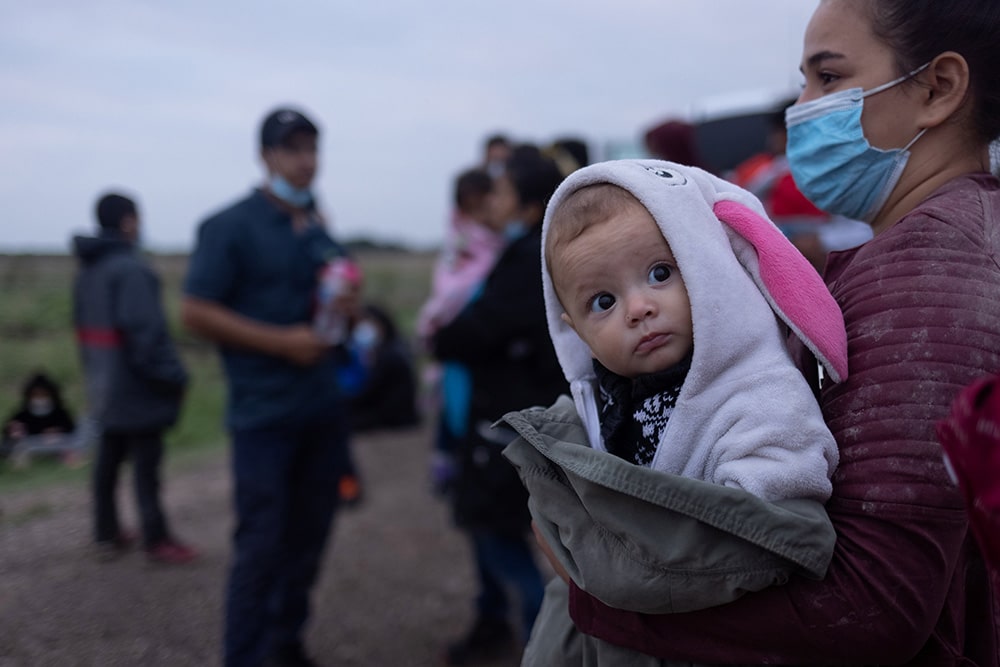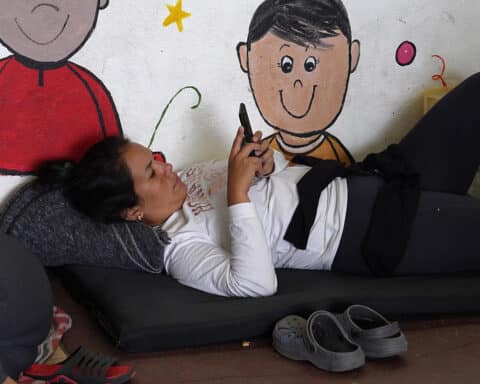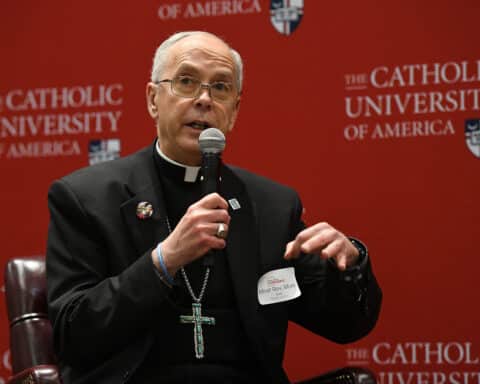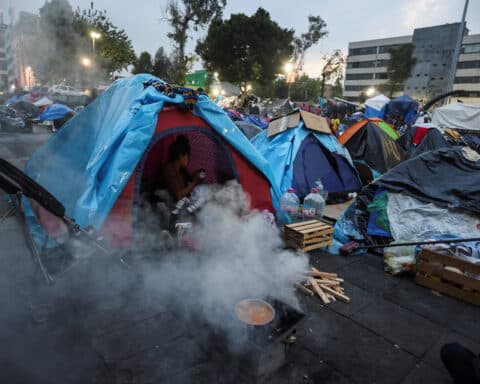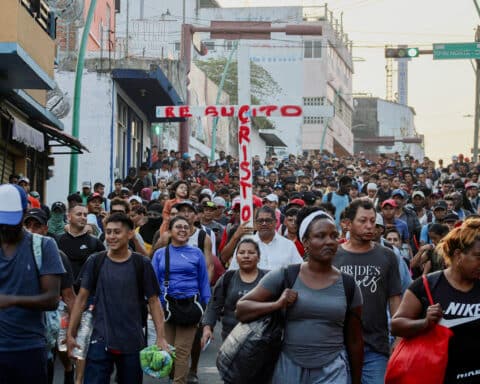I took a hike with my wife yesterday, and we passed a 3- to 5-year-old boy and a 7-year-old girl trying to “scale” the boulders along the path. It was wonderful seeing their determination as they tried to climb their “Mount Everest.” As they mounted the rocks, their parents and grandparents looked on with excitement, joy and encouragement. The girl got to the top, and she raised her hands high, confirming her achievement. The boy struggled, and he turned to his dad and said, “Dad, I think I need some help.” He was unsure he could make it to the top, but he was sure that if he had a problem, his dad would keep him safe.
Compare that wonderful family image with one of two children — sisters, ages 3 and 5 — being dropped from a 14-foot wall by two smugglers, alone (unaccompanied), at night, in the desert. No parents or grandparents, no passers-by providing encouragement, just the fear of being alone in the desert at night. That is exactly what happened on April 1 of this year, according to video footage from the U.S. Border Patrol. This outrageous image of frightened children being literally dropped into the United States is seared into my brain.
Why is this happening? What can we do to prevent it? On June 1-2, a group of Catholic leaders gathered at the Mundelein Seminary outside of Chicago to try to answer these questions and, most importantly, contemplate new ideas about what we as a Church can do to ensure that children, families and undocumented workers are welcomed, protected, promoted and integrated into our families and communities as Pope Francis has asked.
The meeting at Mundelein Seminary calls for injecting new energy to leverage current programs and to advocate with our governments for more sustainable solutions while strengthening and unifying the Church’s pastoral approaches in the Americas.
We began the gathering with a joyful celebration of the Eucharist (in English and Spanish) with religious leaders from Mexico, Central America and the United States. The first presentations were heartbreaking stories, including the one I mentioned above of the children being dropped, though they were also about “dreamers” — longtime residents of the United States — and families being torn apart by violence, persecution, poverty and, sadly, a lack of hope. There were provocative presentations and pastoral recommendations like the one from the Vatican suggesting a “Pastoral Plan for People on the Move between Panama and Canada,” pleas for comprehensive immigration reform and the realization that a unity of spirit and action was required among Church leaders and faithful, as well as the engagement of governments and political leaders to act.
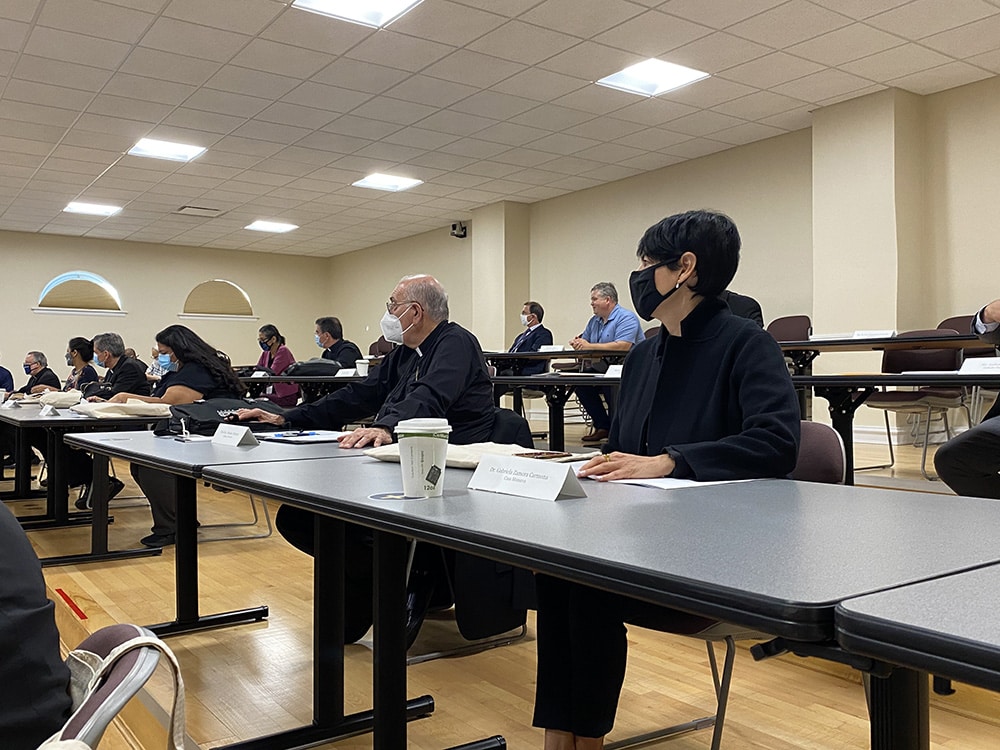
It is recognized that the Church has a crucial role, and we heard from religious and lay Catholics of their programs supporting families in their countries of origin and the safety and love (welcome) they provide to those who feel their homes are no longer viable. The Church’s network of 120 homes for people on the move in Mexico is lifesaving, as is the network of Catholic agencies in the United States that protects the most vulnerable along the border and in our cities and rural communities.
My last trip abroad was to El Salvador (before the COVID lockdowns). During this visit, I joined a program that is assisting young people resist the pull of gangs and provides them the opportunity to work, be trained or receive additional education. I visited farms that are affected by an ongoing drought, and they were demonstrating the skills they had gained that allowed them to diversify crops and market their production. I visited with local mayors who are committed to their local communities despite the national political challenges. And it was most poignant when I stood on the farm of Doña Carla and saw how the new agriculture techniques helped her and her fellow small landholder farmers make a consistent living, when Ernesto came up to me and said: “I was this far away (as he lifted his foot to take a step) from leaving everything and going to the United States until I learned about this program. Now I have the opportunity to provide for my family and give my children a future.” Ernesto helped me focus on the “rootedness” of people who may consider moving — stronger communities; options for women, youth and indigenous peoples; security; job opportunities; a voice; and hope. We need to invest more in giving them the option to stay and to not have to migrate.
The meeting at Mundelein Seminary calls for injecting new energy to leverage current programs and to advocate with our governments for more sustainable solutions while strengthening and unifying the Church’s pastoral approaches in the Americas. Catholic Relief Services is working with Church leaders globally to ensure the 80 million people forcibly displaced in the world today know that the Catholic faithful recognize and respect their human dignity. Let’s hope that when children are literally dropped over the border wall in the middle of night in an isolated spot in the desert, they do not land with a thump in the sand but are caught by loving arms.
Sean Callahan is president and CEO of Catholic Relief Services, the official international humanitarian agency of the Catholic community in the United States.

